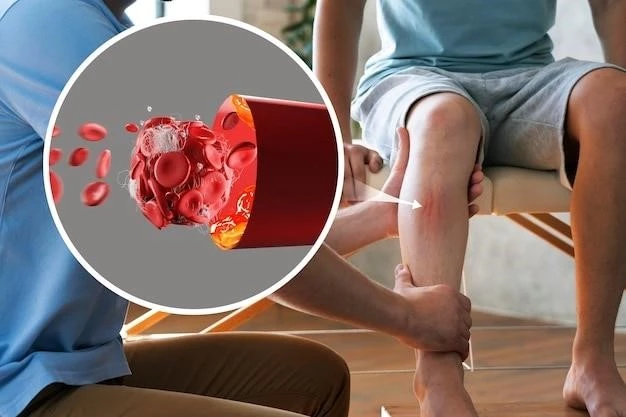Overview of Tibial Aplasia Ectrodactyly
The Tibial Aplasia Ectrodactyly syndrome, also known as Aplasia of tibia with split-hand/split-foot deformity, is a rare limb malformation characterized by ectrodactyly and aplasia/hypoplasia of the tibia bone. Additional anomalies may include hypoplasia or aplasia of other bones in the limbs.
Definition and Terminology
The Tibial Aplasia Ectrodactyly syndrome, also referred to as Aplasia of tibia with split-hand/split-foot deformity or SHFLD syndrome, is an exceptionally rare limb malformation characterized by ectrodactyly and aplasia/hypoplasia of the tibia bone. Additional features may include cup-shaped ears, polydactyly, and anomalies such as patellar aplasia. The condition is also known as Tibial hemimelia-ectrodactyly syndrome or Split-hand/split-foot malformation with long bone deficiency. Individuals with this syndrome may have varying degrees of limb anomalies, including absence or underdevelopment of certain bones in the extremities.
Clinical Features and Presentation
The Tibial Aplasia Ectrodactyly syndrome, also known as Aplasia of tibia with split-hand/split-foot deformity, is a rare limb malformation characterized by ectrodactyly and aplasia/hypoplasia of the tibia bone. Additional anomalies may include hypoplasia or aplasia of other bones in the limbs.
Common Anomalies Associated with Ectrodactyly
Ectrodactyly with tibial aplasia/hypoplasia, also known as cleft hand absent tibia, is a rare limb malformation syndrome characterized by ectrodactyly, aplasia/hypoplasia of the tibia bone, as well as other anomalies such as cup-shaped ears, polydactyly, and hypoplasia/aplasia of various bones in the limbs.
Rare Findings in Tibial Aplasia Ectrodactyly Syndrome
Other anomalies may include hypoplasia or aplasia of the ulnae, distal hypoplasia or bifurcation of the femora, absence of patellae, clubfoot, hypoplastic big toes, postaxial and intermediate polydactyly. The Gollop-Wolfgang complex is characterized by ectrodactyly of the hand, bifurcation of the femur, and tibial hemimelia. Surgical intervention may be necessary for associated limb anomalies.

Genetic Basis of Tibial Aplasia Ectrodactyly
Ectrodactyly is a condition characterized by at least one missing digit and can be accompanied by tibial aplasia/hypoplasia. The syndrome may be caused by genetic mutations with variable inheritance patterns, possibly involving autosomal dominant transmission with reduced penetrance. Understanding the genetic basis is crucial for diagnosis and treatment decisions.
Causes⁚ Hereditary vs. Random Mutations
Ectrodactyly with tibial aplasia/hypoplasia, or cleft hand absent tibia, can result from genetic mutations passed down from parents (hereditary) or occur randomly during cell division. These mutations may be inherited in an autosomal dominant pattern with reduced penetrance or arise sporadically. The variability in genetic causes underscores the importance of genetic testing for diagnosis and counseling.
Inheritance Patterns and Genetic Mutations
Tibial aplasia ectrodactyly syndrome can be caused by genetic mutations that are either inherited from parents (hereditary) or occur randomly during cell division. These mutations may follow an autosomal dominant pattern, possibly with reduced penetrance, or may arise sporadically. Understanding the inheritance patterns and specific genetic mutations is crucial for accurate diagnosis and appropriate genetic counseling.
Diagnosis and Differential Diagnosis
The diagnosis of Tibial Aplasia Ectrodactyly syndrome involves clinical evaluation, imaging studies like X-rays, and genetic testing to confirm the presence of associated anomalies. Differential diagnoses may include other limb malformation syndromes, genetic disorders affecting bone development, and congenital anomalies not related to the syndrome.
Diagnostic Tests for Tibial Aplasia Ectrodactyly
The diagnosis of Tibial Aplasia Ectrodactyly involves physical examination, X-rays, and genetic testing to confirm limb anomalies. Differential diagnosis may include other genetic bone disorders and congenital limb abnormalities. Understanding the specific diagnostic tests is crucial for accurate identification of the syndrome.
Other Disorders to Rule Out
When diagnosing Tibial Aplasia Ectrodactyly, healthcare providers may need to rule out other limb malformation syndromes, genetic bone disorders, and congenital anomalies unrelated to the syndrome. Differential diagnoses may include fibular aplasia-ectrodactyly syndrome, split-hand/split-foot malformation with varying presentations. Understanding these differential diagnoses is essential for accurate identification and management.
The management of Tibial Aplasia Ectrodactyly involves multidisciplinary care, including orthopedic interventions, prosthetic devices, and physical therapy to improve mobility and function. Surgical procedures may be necessary to address limb anomalies, and ongoing monitoring is essential to address any complications that may arise.
Treatment and Management Approaches
Treatment for Tibial Aplasia Ectrodactyly involves a multidisciplinary approach including orthopedic interventions, prosthetic devices, and physical therapy to enhance mobility and functionality. Surgical interventions may be necessary to address limb anomalies, and ongoing monitoring is crucial to manage potential complications effectively.
Surgical Interventions and Rehabilitation
Surgical interventions for Tibial Aplasia Ectrodactyly may involve procedures to address limb anomalies, such as reconstruction of missing bones, syndactyly correction, and amputation revision. Rehabilitation programs including physical therapy are essential for optimizing functional outcomes and mobility in individuals with this syndrome.
Prognosis and Complications
Individuals with Tibial Aplasia Ectrodactyly may face challenges related to mobility and limb function. Prognosis varies depending on the severity of limb anomalies and associated complications. Complications may include skeletal deformities, challenges with fine motor skills, and potential psychological impacts due to physical differences. Long-term outlook and quality of life depend on the individual’s specific condition and management approach.
Long-Term Outlook for Individuals with Tibial Aplasia Ectrodactyly
Individuals with Tibial Aplasia Ectrodactyly may face challenges related to mobility and limb function. Prognosis varies depending on the severity of limb anomalies and associated complications. Complications may include skeletal deformities, challenges with fine motor skills, and potential psychological impacts due to physical differences. Long-term outlook and quality of life depend on the individual’s specific condition and management approach.
Potential Complications and Associated Risks
Complications associated with Tibial Aplasia Ectrodactyly may include skeletal deformities, challenges with fine motor skills, potential abnormalities in craniofacial and genitourinary areas, and psychological impacts due to physical differences. Risks may involve the need for surgical interventions, limb function limitations, and long-term mobility issues. Understanding these potential complications is essential for comprehensive management.

Research and Specialist Insights
Medical professionals have conducted research on Tibial Aplasia Ectrodactyly, gaining valuable insights into the syndrome’s genetic basis, diagnostic approaches, and treatment options. Specialists contribute to enhancing understanding and management by delving into the complexities of this rare condition. Ongoing research and clinical trials aim to improve outcomes and quality of life for individuals affected by Tibial Aplasia Ectrodactyly.
Specialists’ Contributions to Understanding the Syndrome
Specialists play a vital role in advancing the understanding of Tibial Aplasia Ectrodactyly syndrome through research, clinical expertise, and collaboration. Their contributions aid in identifying genetic mutations, improving diagnostic methods, and refining treatment approaches for individuals affected by this rare condition. By sharing insights and participating in ongoing research efforts, specialists enhance the care and outcomes for patients with Tibial Aplasia Ectrodactyly.
Ongoing Research Efforts and Clinical Trials
Current research on Tibial Aplasia Ectrodactyly includes investigating the genetic basis, diagnostic methods, and therapeutic approaches. Clinical trials aim to evaluate new treatment modalities, surgical interventions, and rehabilitation strategies to enhance the quality of life for individuals with this rare syndrome. Ongoing efforts focus on advancing medical knowledge and improving outcomes for affected individuals through evidence-based practices.
